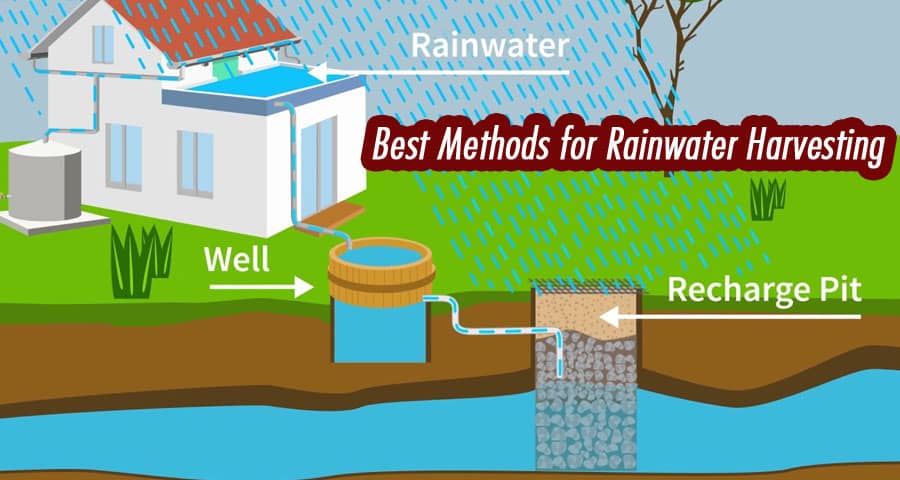Best Methods for Rainwater Harvesting

Rainwater harvesting is an eco-friendly practice that has gained popularity in recent years due to its multiple benefits for both the environment and homeowners. With increasing concerns about water scarcity and environmental sustainability, rainwater harvesting has become an essential practice for many.
Introduction
Rainwater harvesting involves collecting and storing rainwater that falls on rooftops and other surfaces. This harvested water can be used for various purposes, such as irrigation, flushing toilets, and even for drinking after proper treatment. Let's dive deeper into this sustainable practice.
Why Rainwater Harvesting is Important
Rainwater harvesting helps conserve water resources and reduce the demand on municipal water supplies. It also reduces runoff, which can lead to soil erosion and flooding in urban areas. By harvesting rainwater, we can utilize a free and abundant source of water while contributing to a more sustainable future.
Choosing the Right System
Selecting the right rainwater harvesting system depends on your specific needs and available space. There are several options to consider:
Basic Rain Barrels
Basic rain barrels are an excellent starting point for homeowners. They collect rainwater from downspouts and store it in large containers. This stored water can then be used for gardening and other non-potable purposes.
Gutter and Downspout Systems
These systems divert rainwater from rooftops into storage tanks or cisterns. They can be installed in both residential and commercial buildings, making them a versatile choice.
Advanced Underground Storage
For those with limited space or aesthetic concerns, underground storage tanks are an ideal solution. They are hidden from view and can store large volumes of rainwater.
Green Roofs
Green roofs not only provide insulation but also capture rainwater for plant irrigation. They are a sustainable choice for both residential and commercial properties.
Pervious Pavements
Pervious pavements allow rainwater to infiltrate the ground instead of running off. This method is beneficial for preventing surface flooding and replenishing groundwater.
Filtration and Purification
Before using harvested rainwater for potable purposes, it's crucial to filter and purify it to ensure its safety. Various filtration and purification methods are available to achieve this.
Maintenance and Cleaning
Regular maintenance is essential to keep your rainwater harvesting system functioning optimally. This includes cleaning gutters, inspecting storage tanks, and ensuring that filtration systems are working correctly.
Benefits of Rainwater Harvesting
- Environmental Impact: Rainwater harvesting reduces the strain on natural water sources and lowers the energy required for water treatment and distribution. It also helps prevent pollution of rivers and lakes by reducing stormwater runoff.
- Cost Savings: Harvesting rainwater can lead to significant cost savings on water bills, especially for irrigation and non-potable uses. It also adds value to properties and may qualify for government incentives or rebates.
- Legal Considerations: Before implementing a rainwater harvesting system, it's essential to check local regulations and permits. Some areas have specific guidelines regarding water collection and use.
Conclusion
Rainwater harvesting is a sustainable practice that benefits the environment and individuals alike. By choosing the right system, maintaining it properly, and understanding its legal implications, you can make a positive impact on your community while enjoying cost savings and a more sustainable lifestyle.
FAQs
Is rainwater safe to drink without treatment?
While rainwater is generally safe, it should be treated before consumption to remove contaminants.
Can I install a rainwater harvesting system on my existing property?
Yes, rainwater harvesting systems can be retrofitted to existing buildings with the right modifications.
What is the lifespan of a rainwater harvesting system?
With proper maintenance, a well-designed system can last for many years.
Are there government incentives for rainwater harvesting?
Some regions offer incentives or rebates to encourage rainwater harvesting adoption.
How can I calculate the potential savings from rainwater harvesting?
You can estimate savings based on your water consumption and the cost of water in your area.
For more information, Please watch the following Video Tuotorial
Source: L.A.L. Tabshoura
